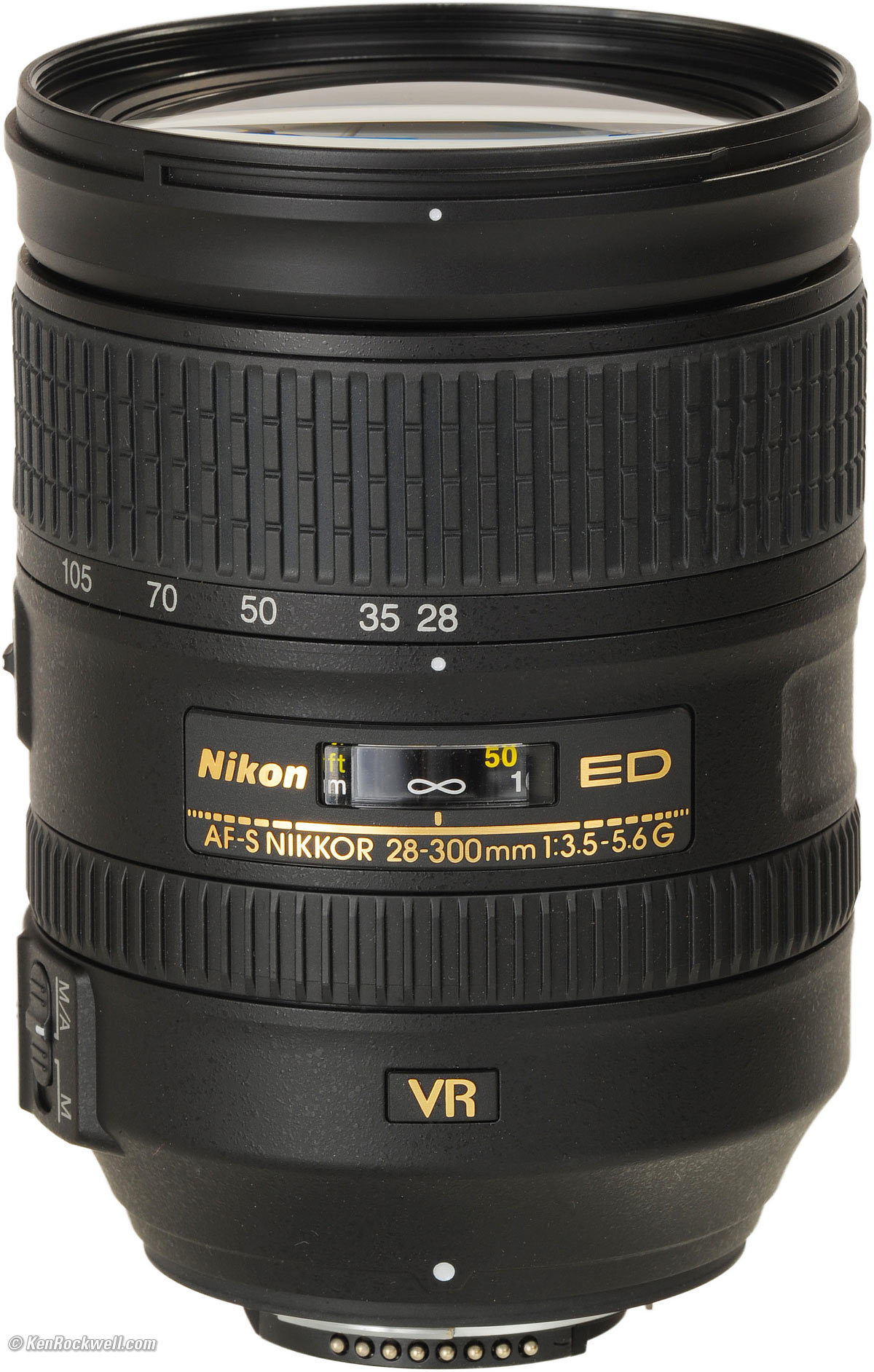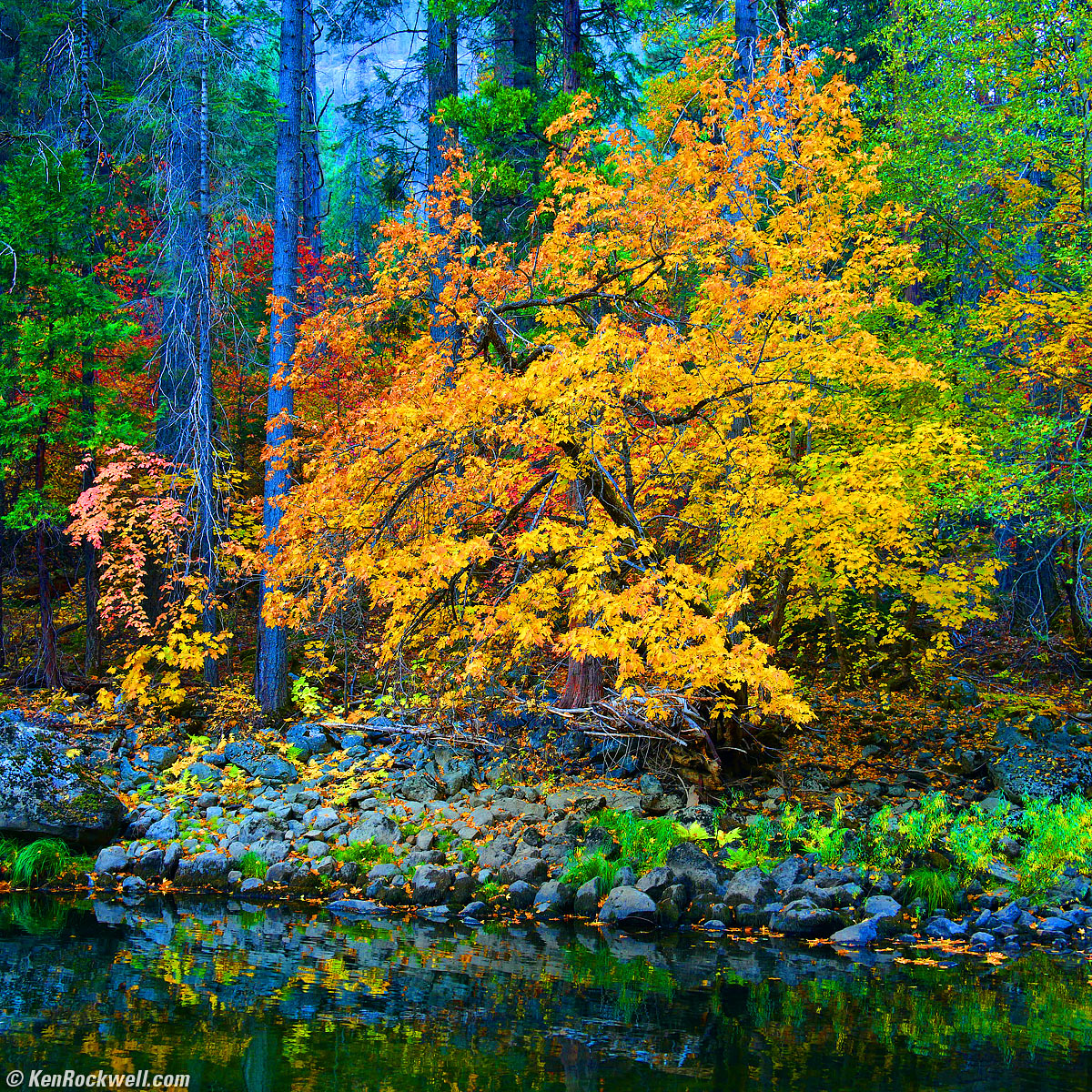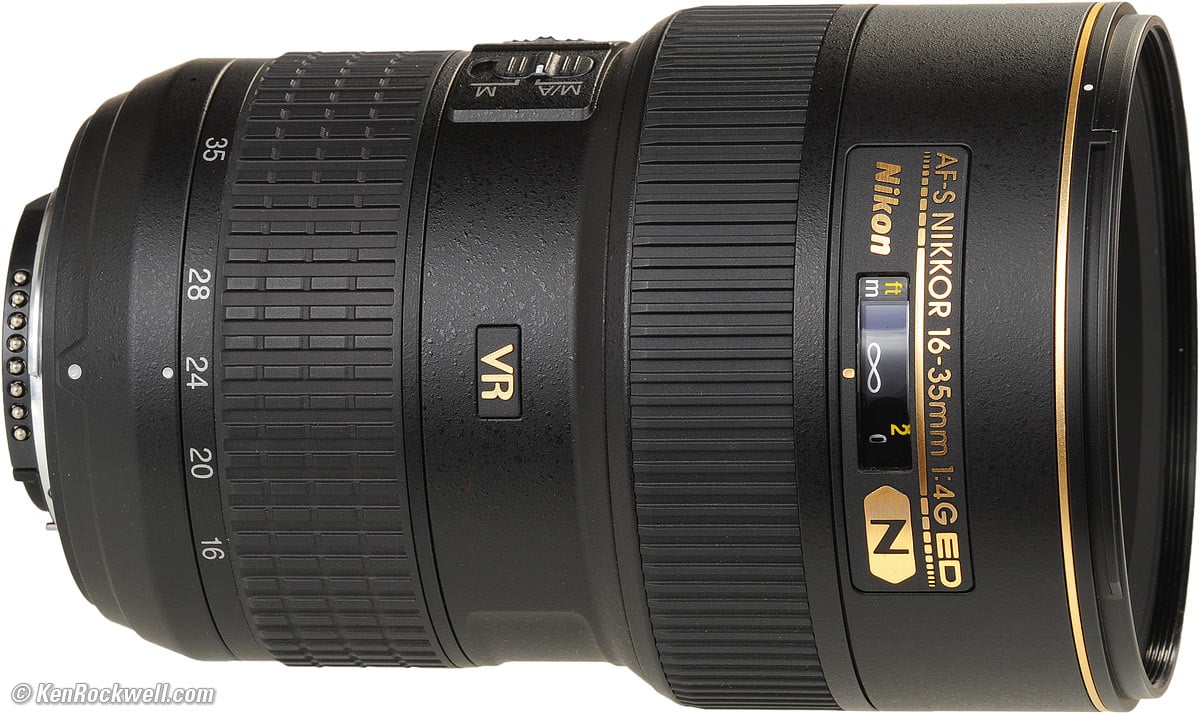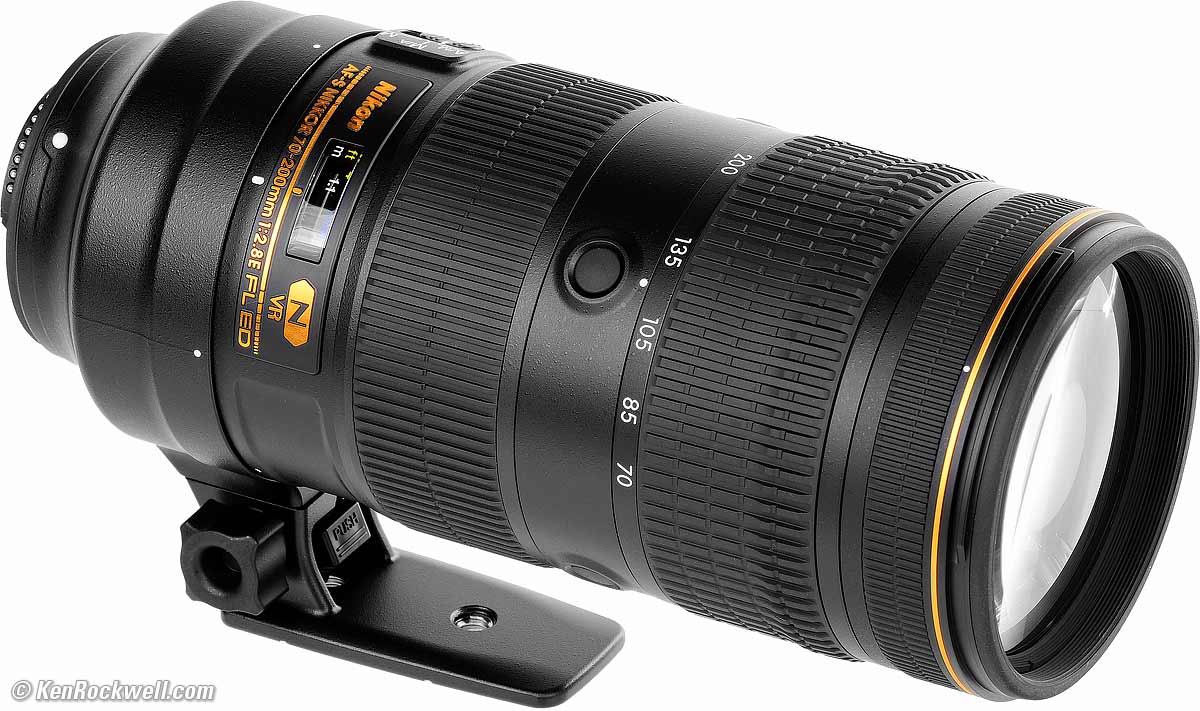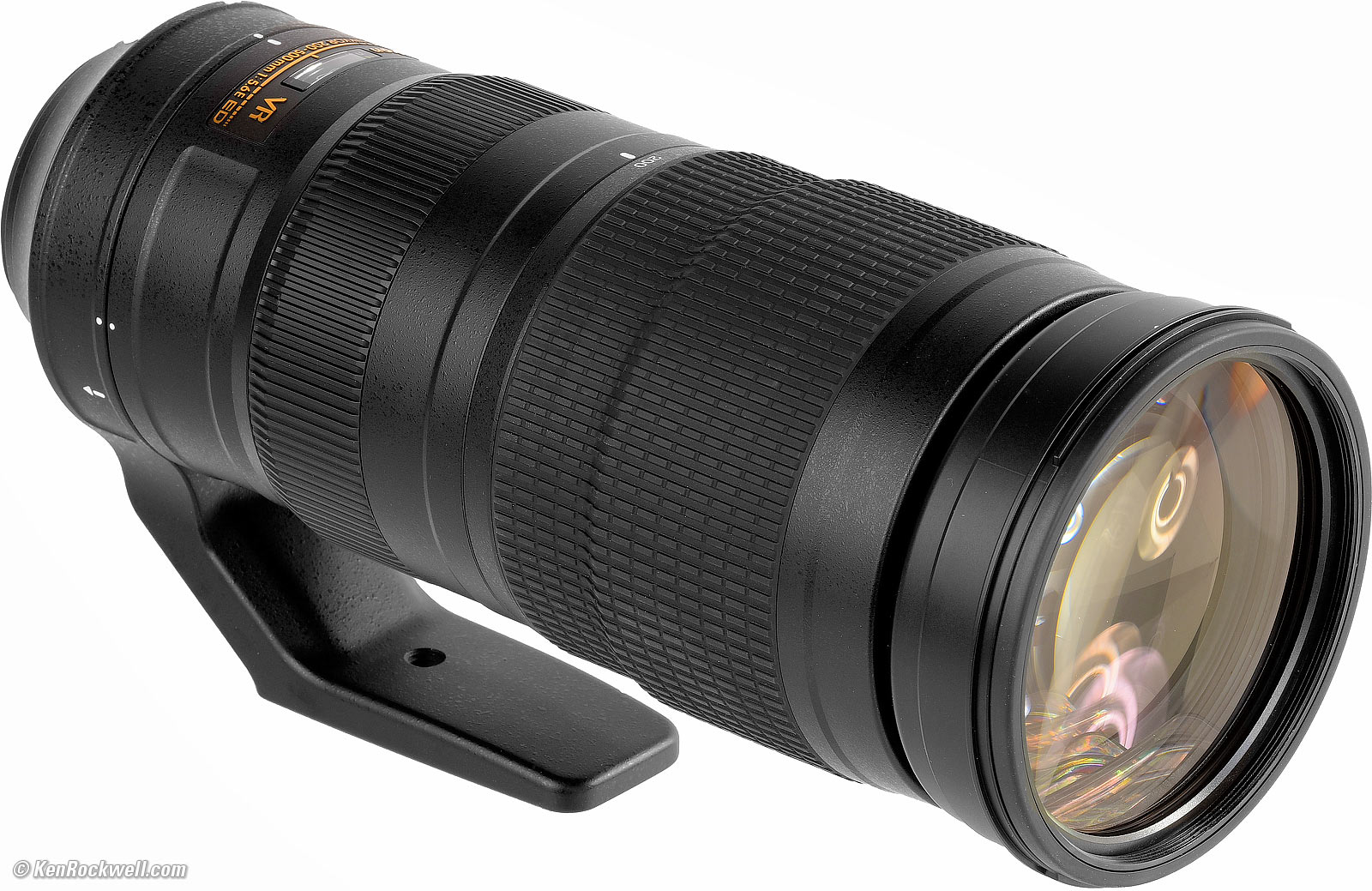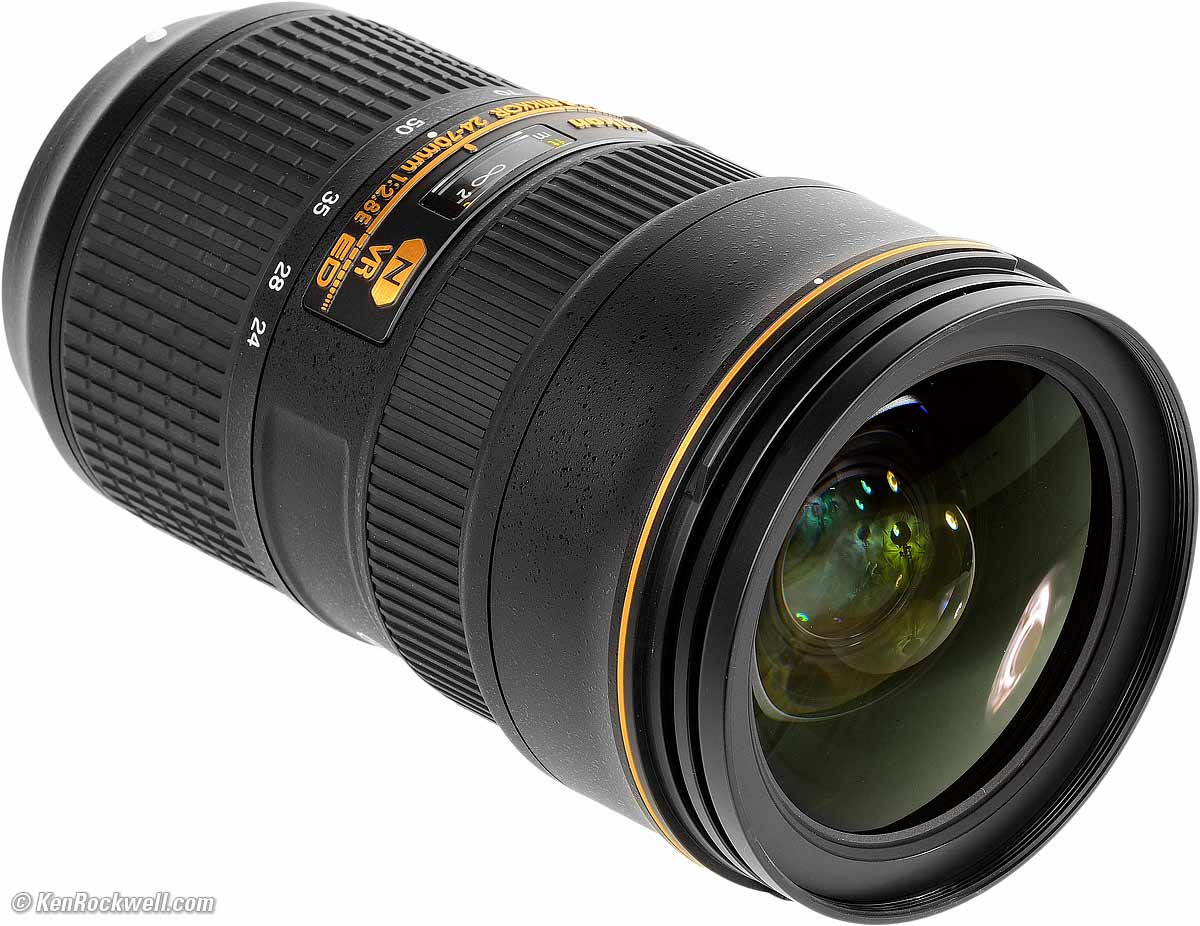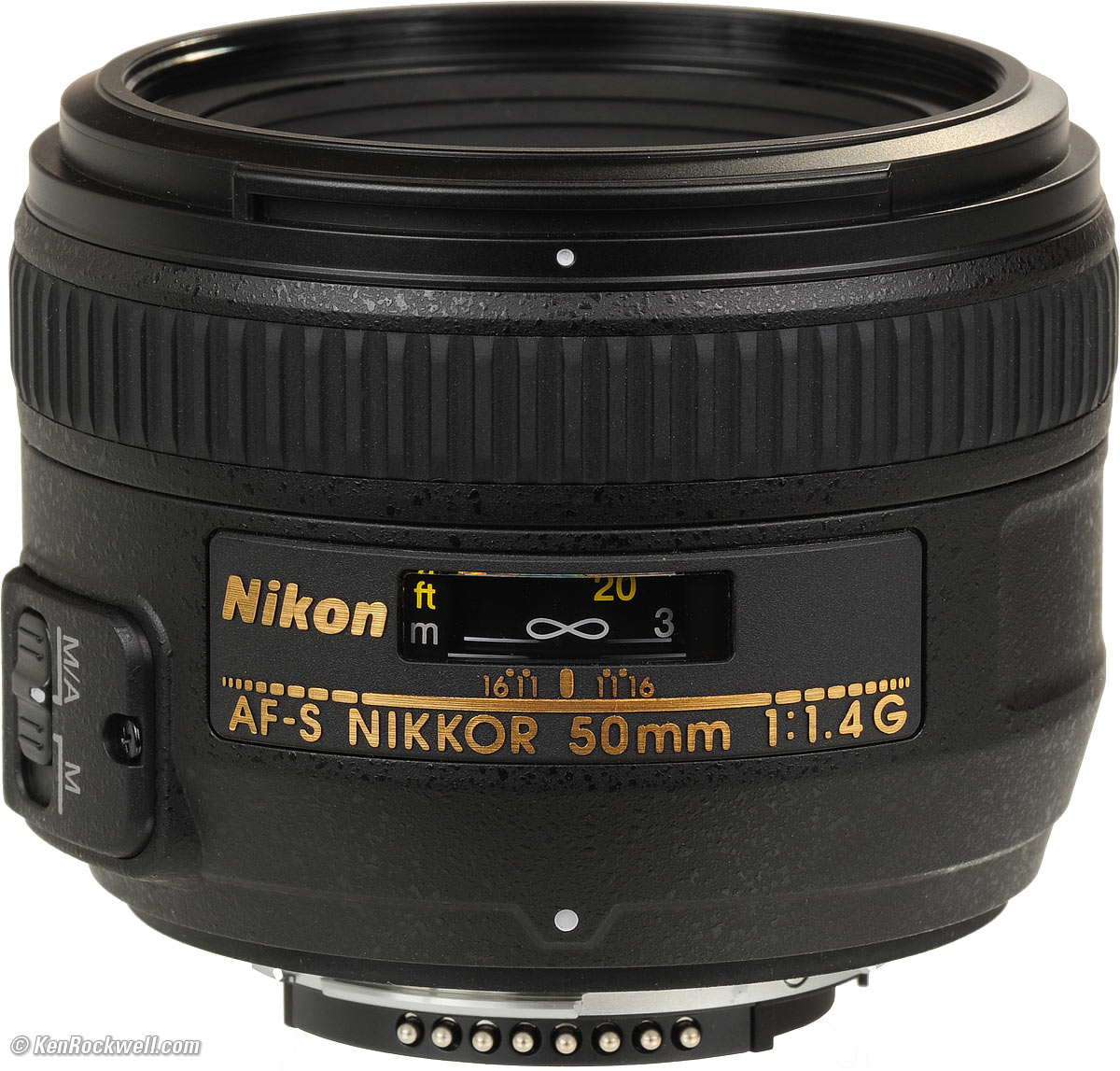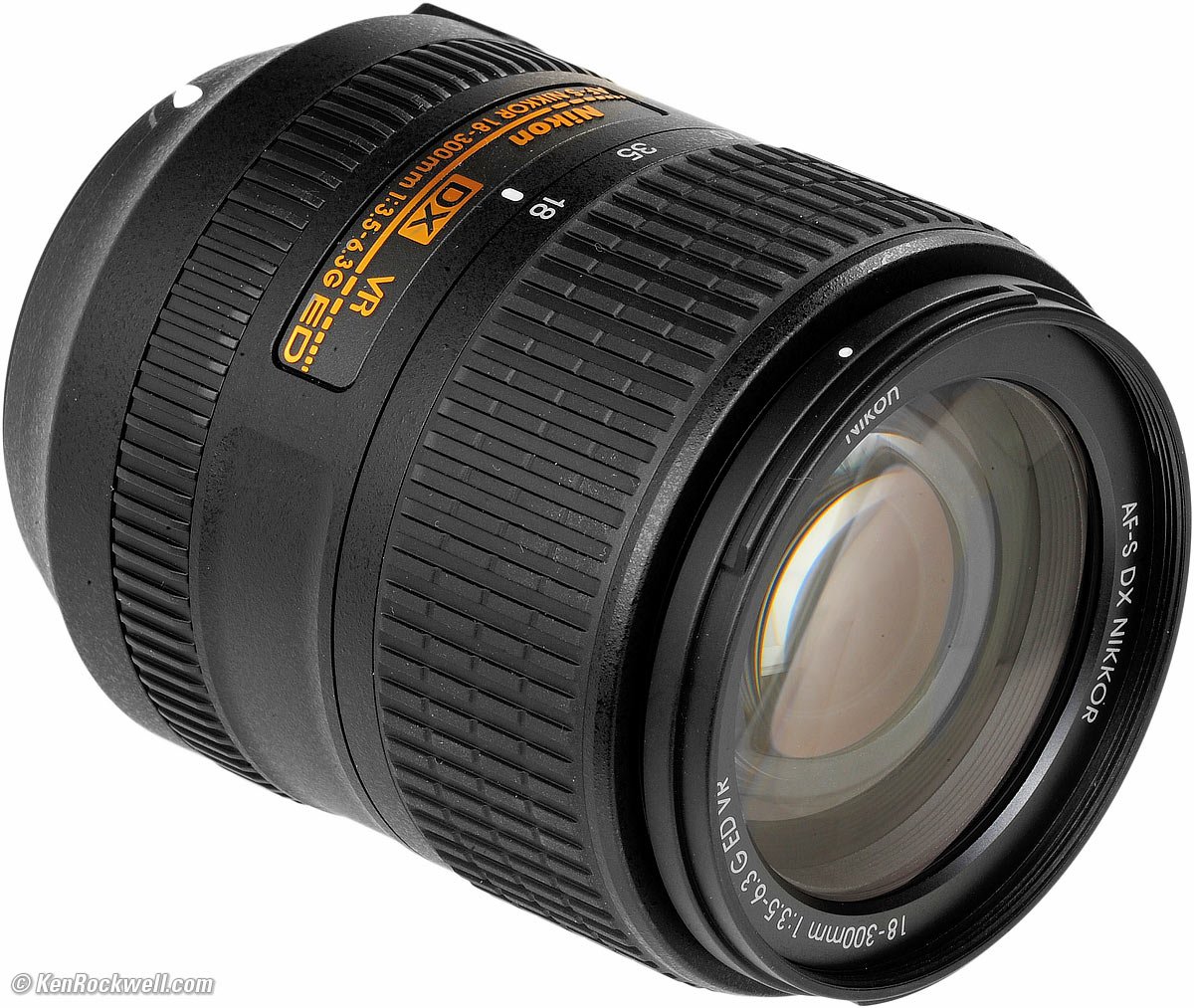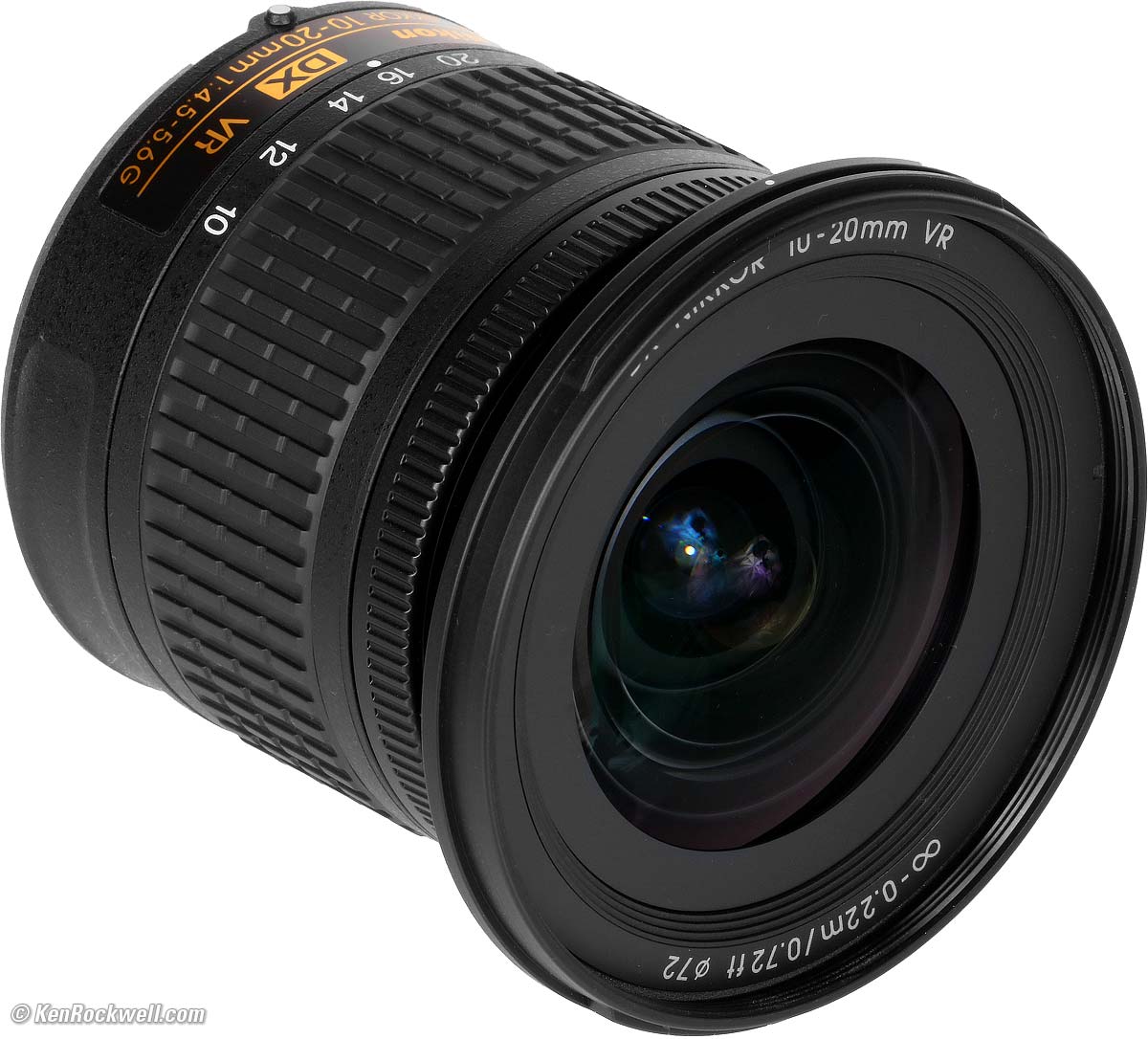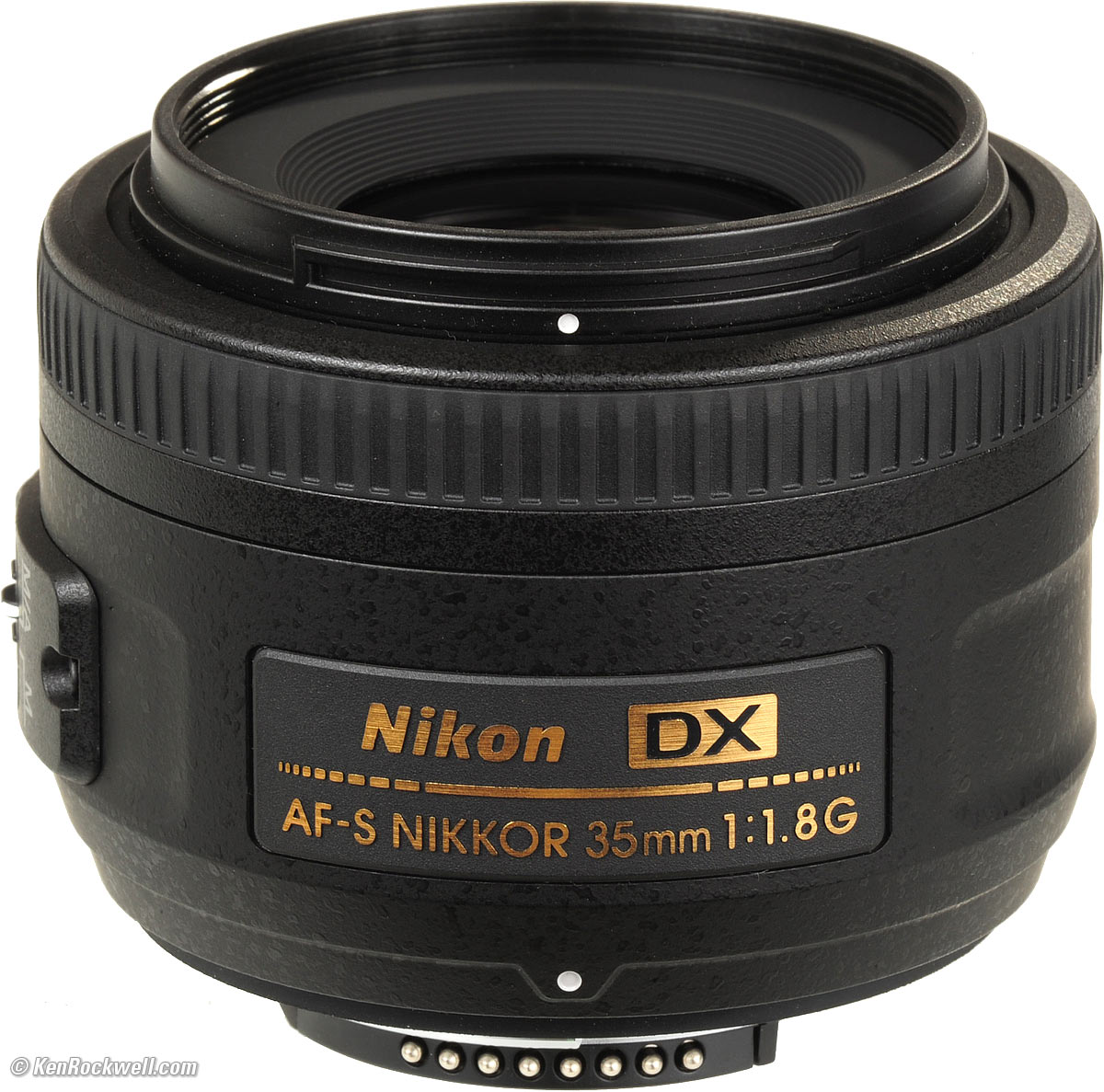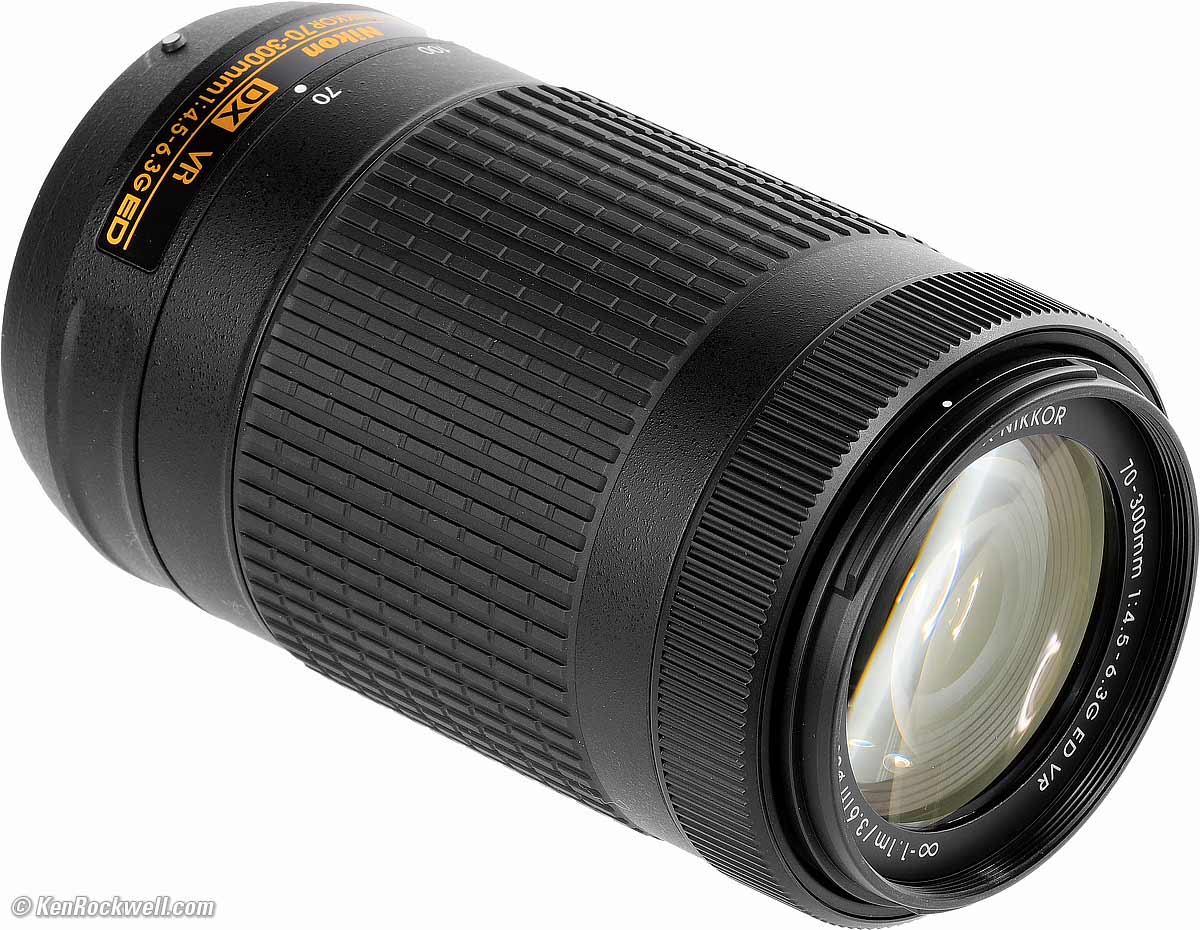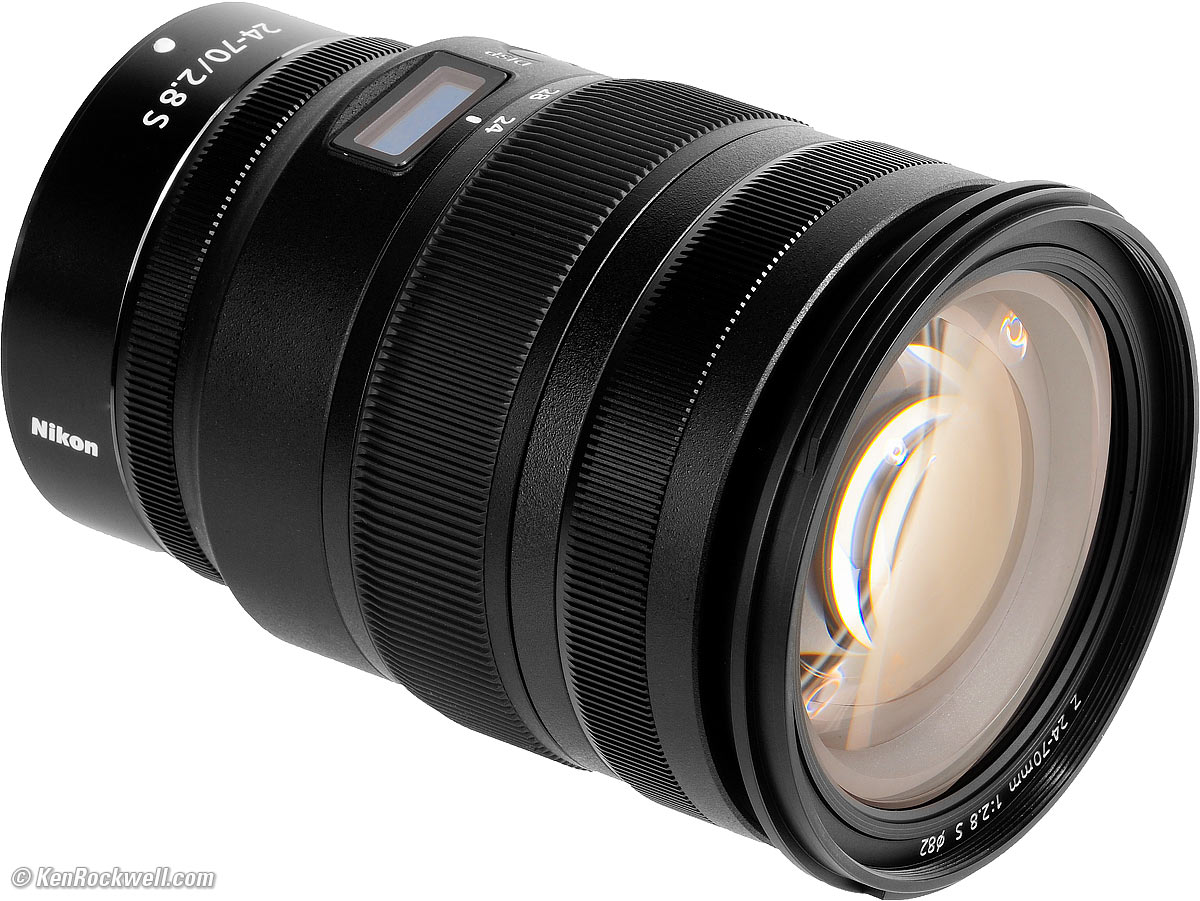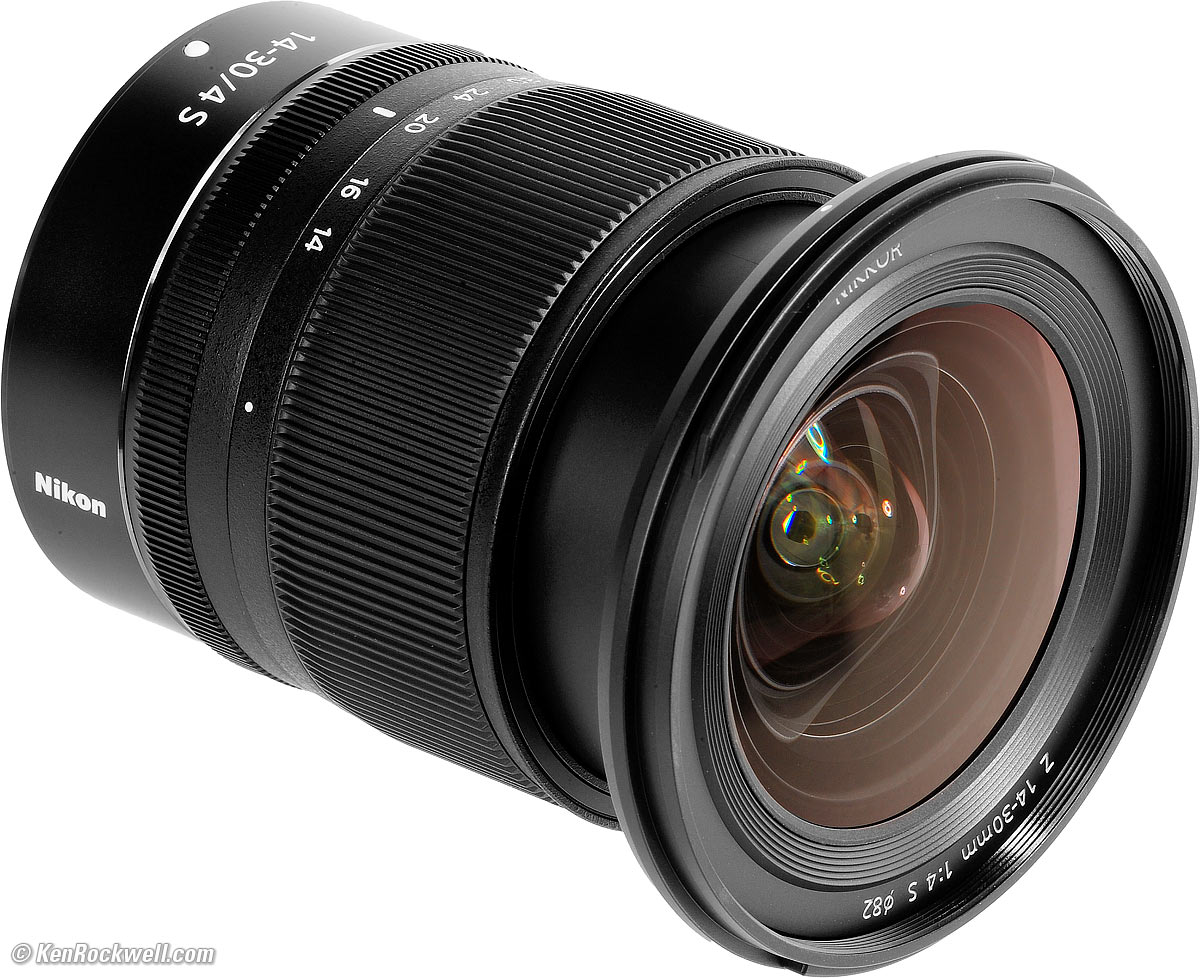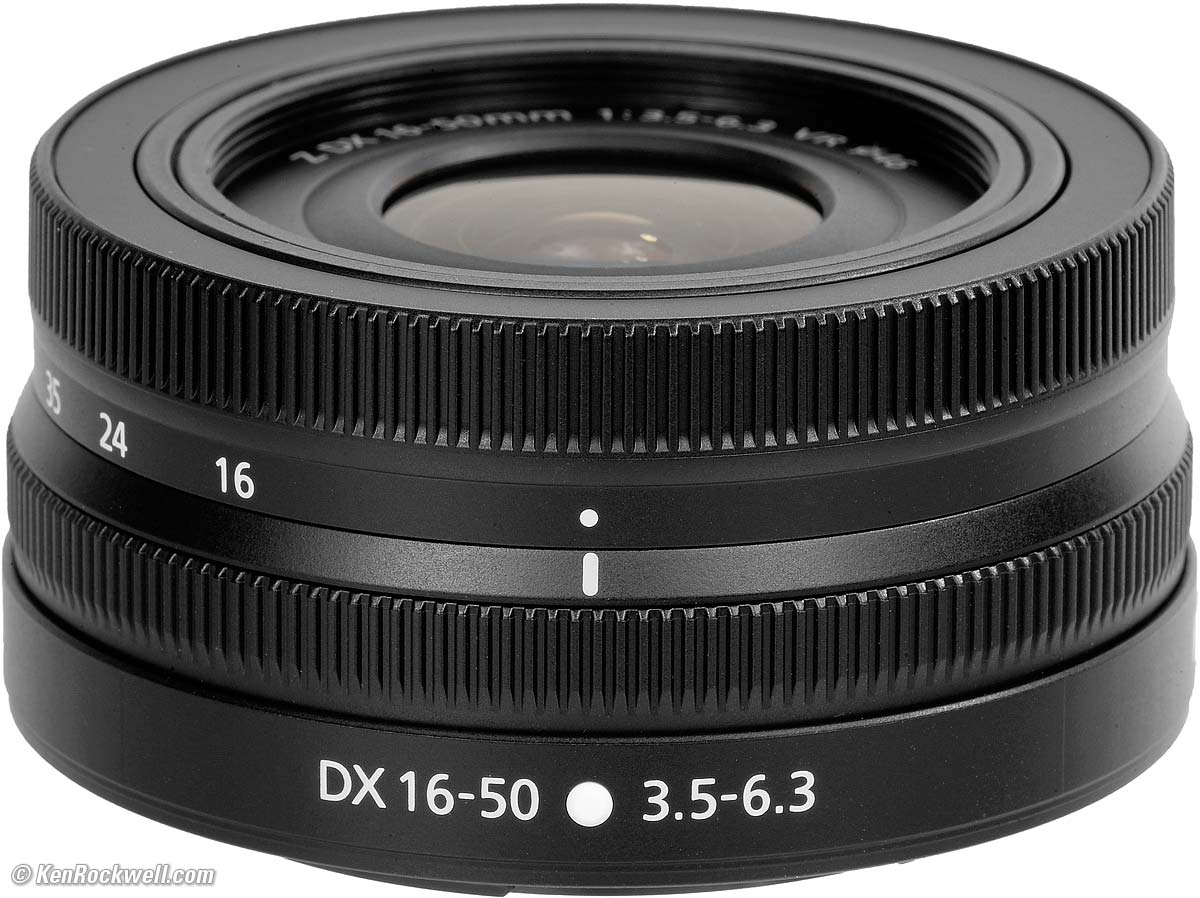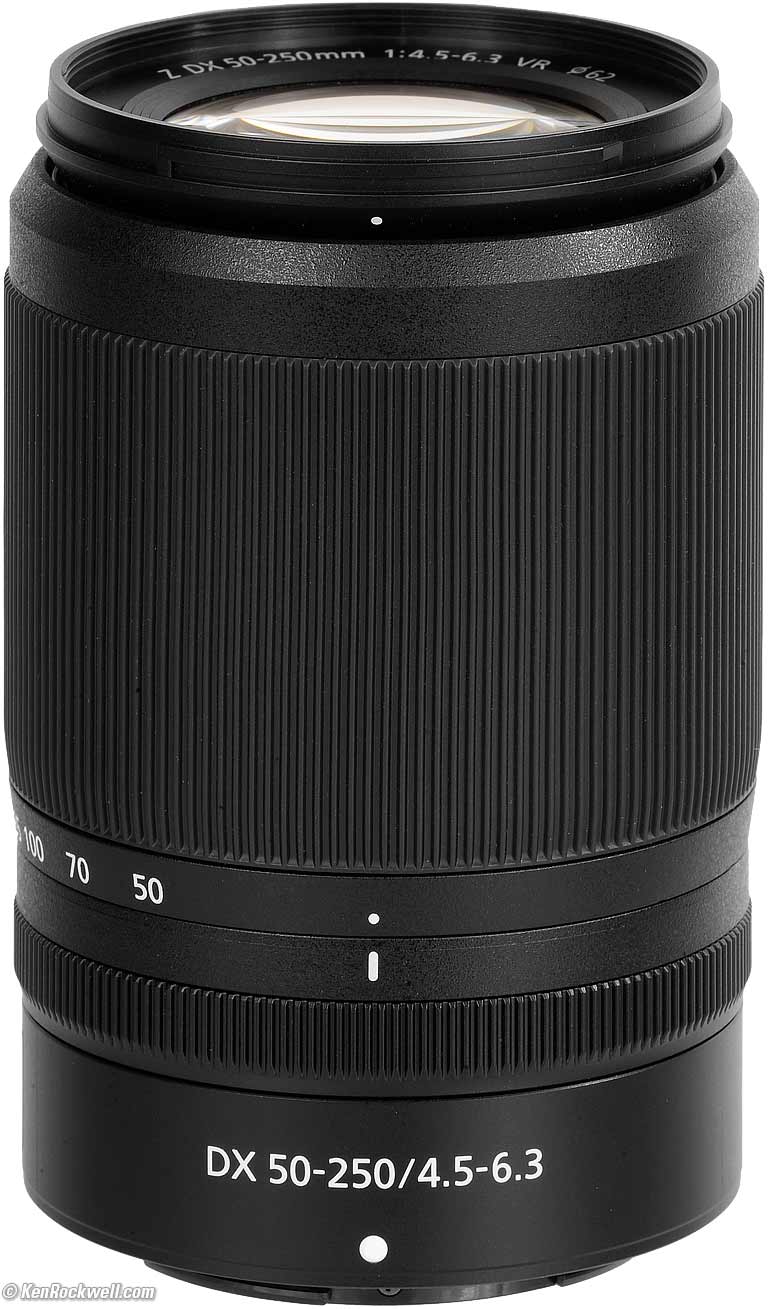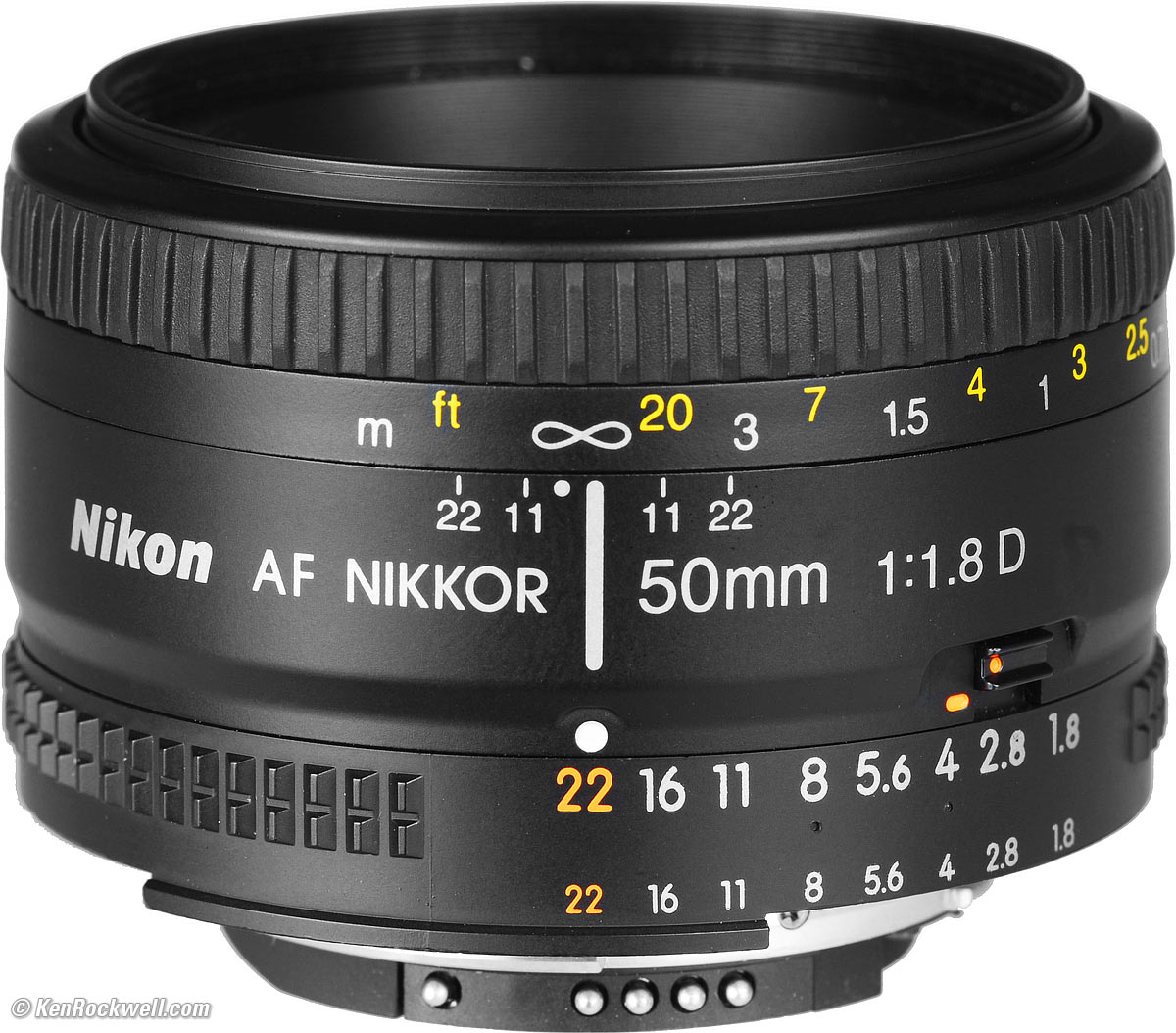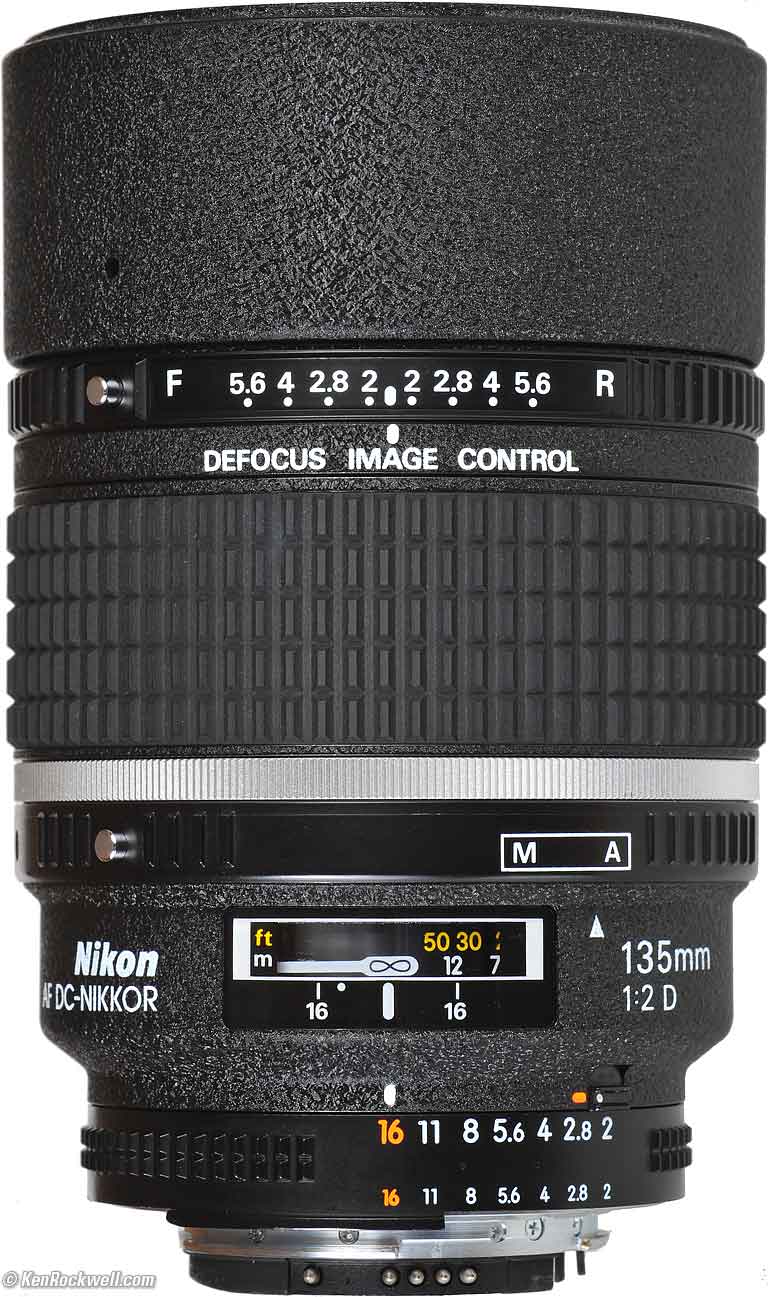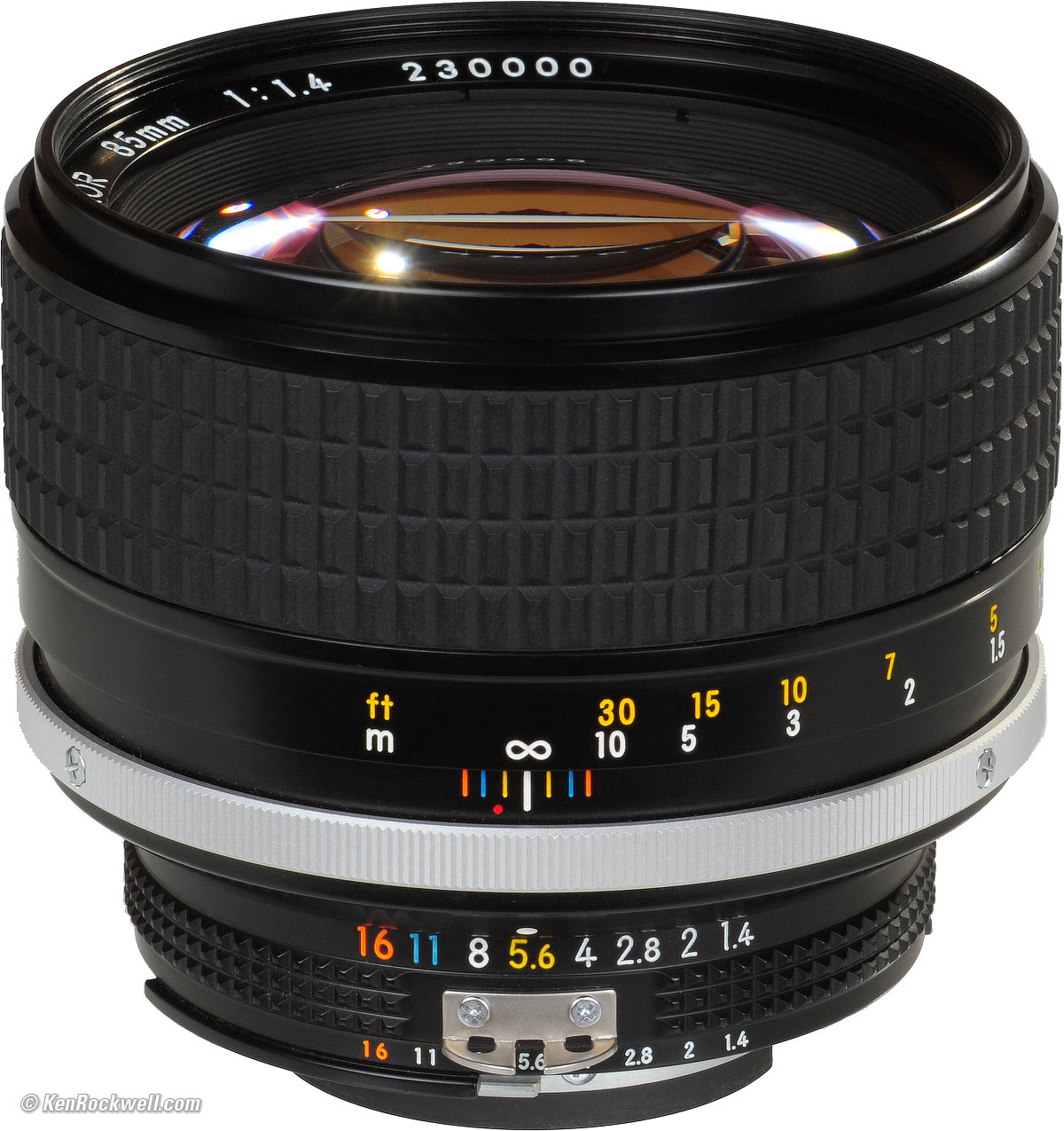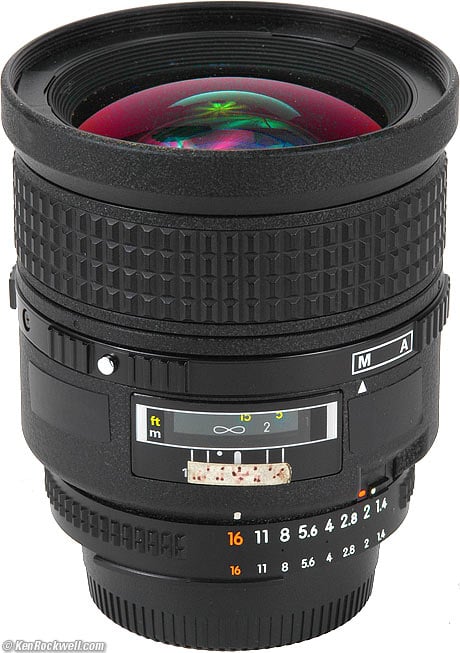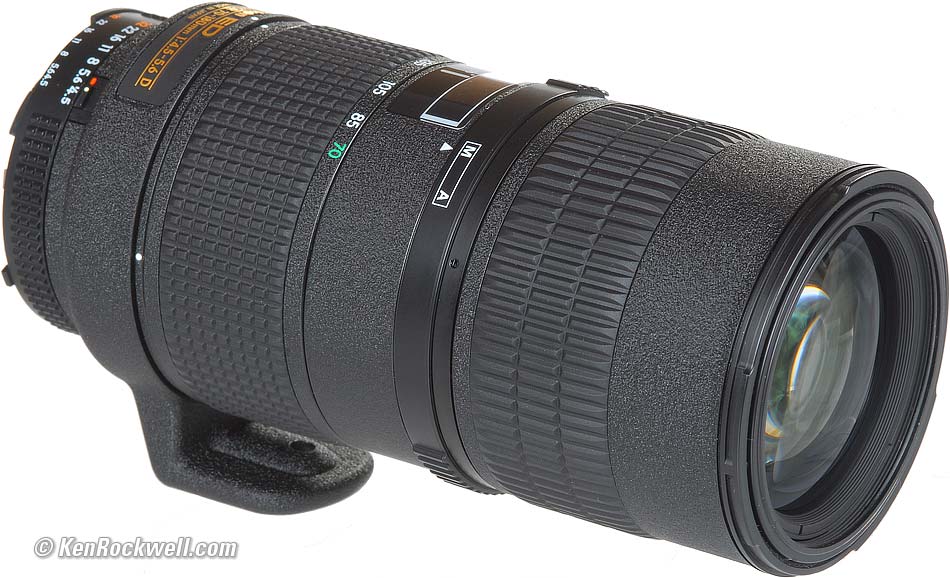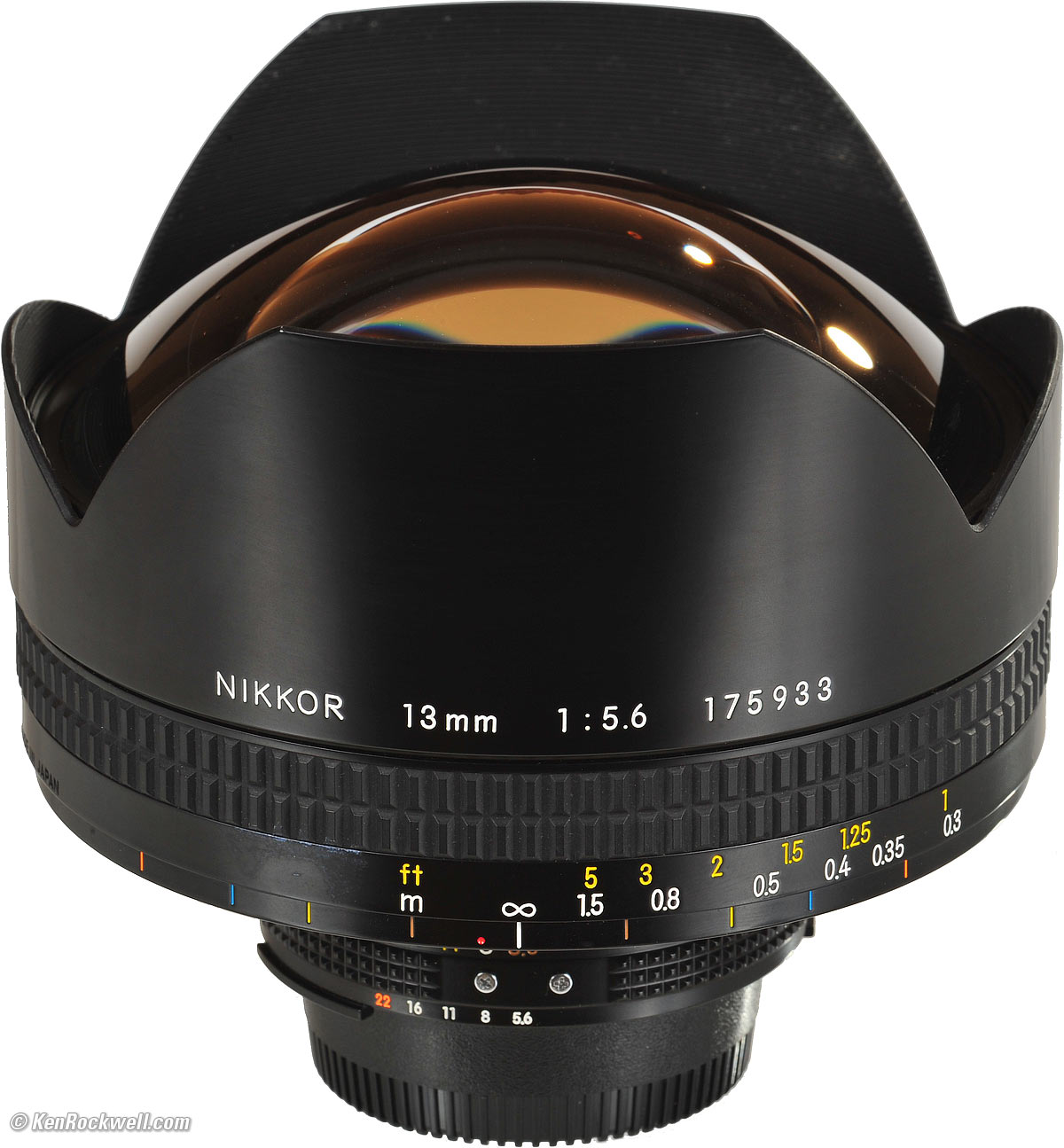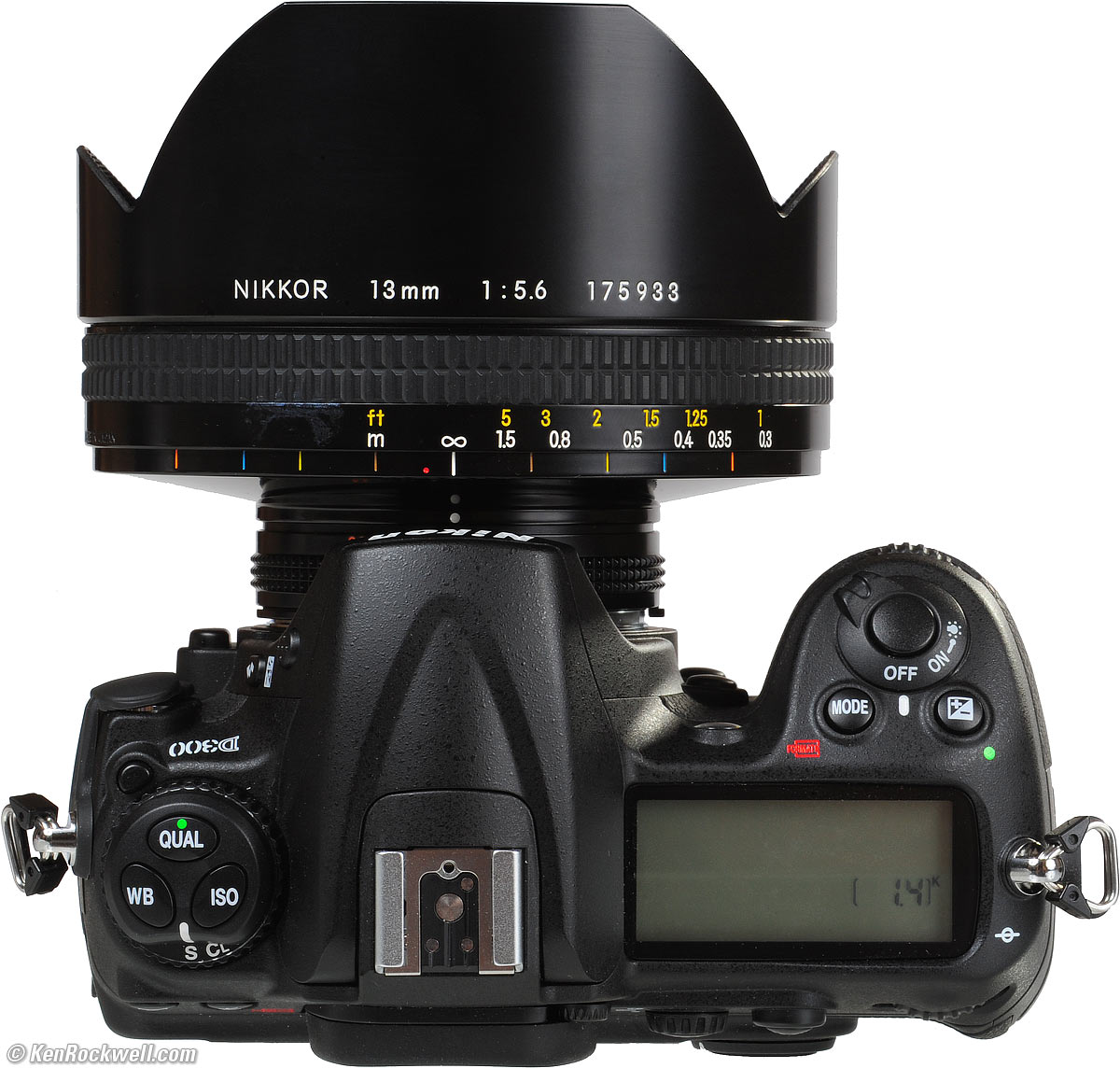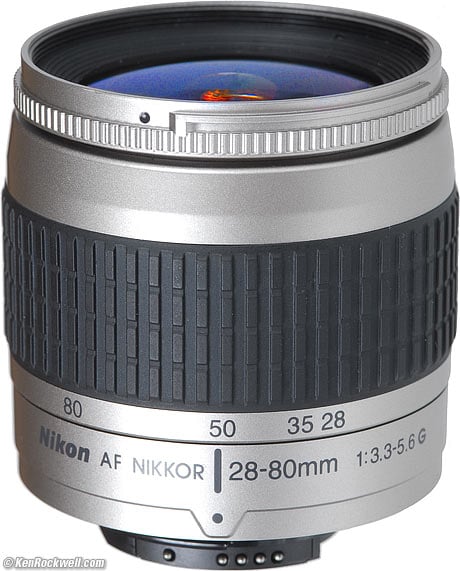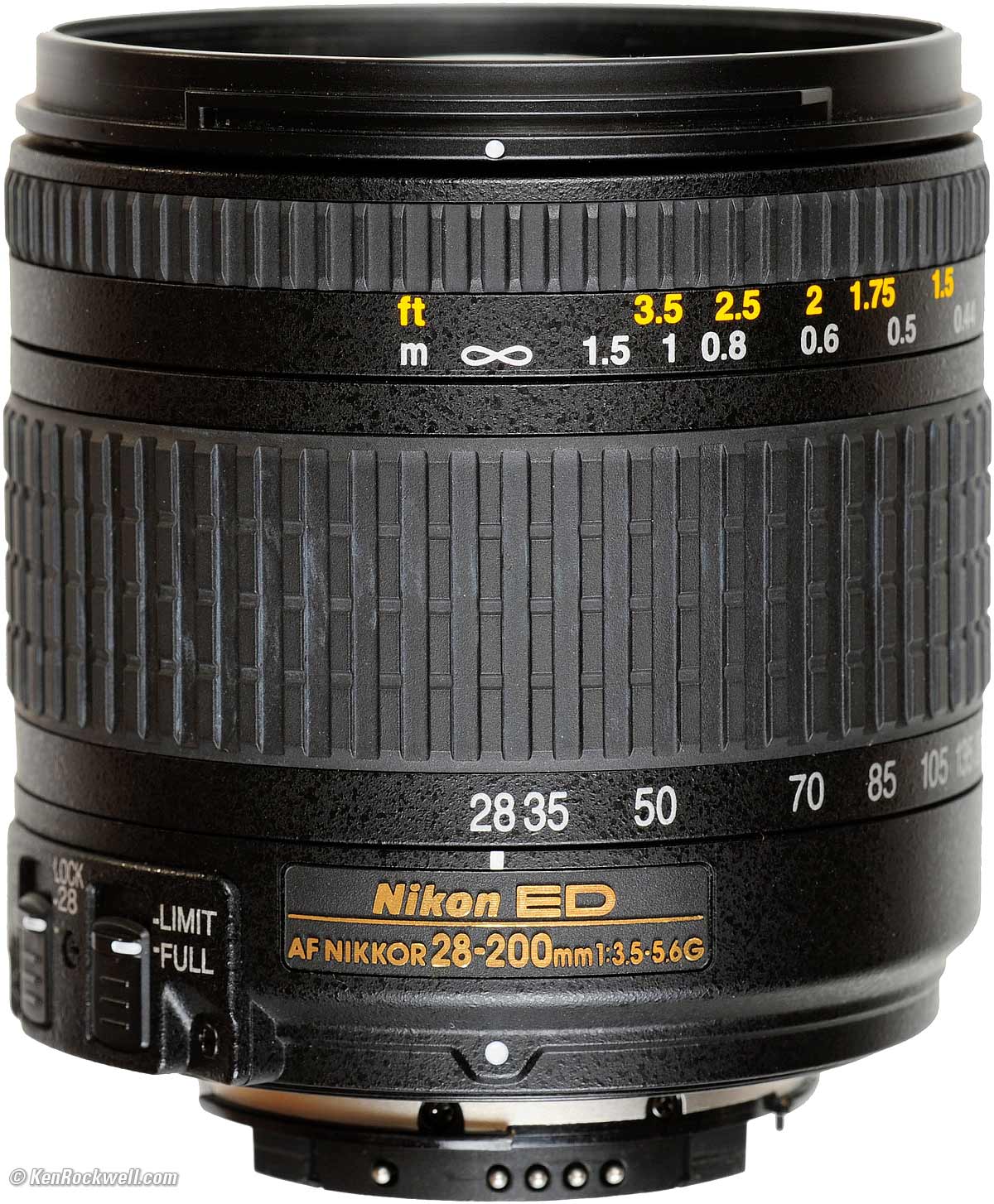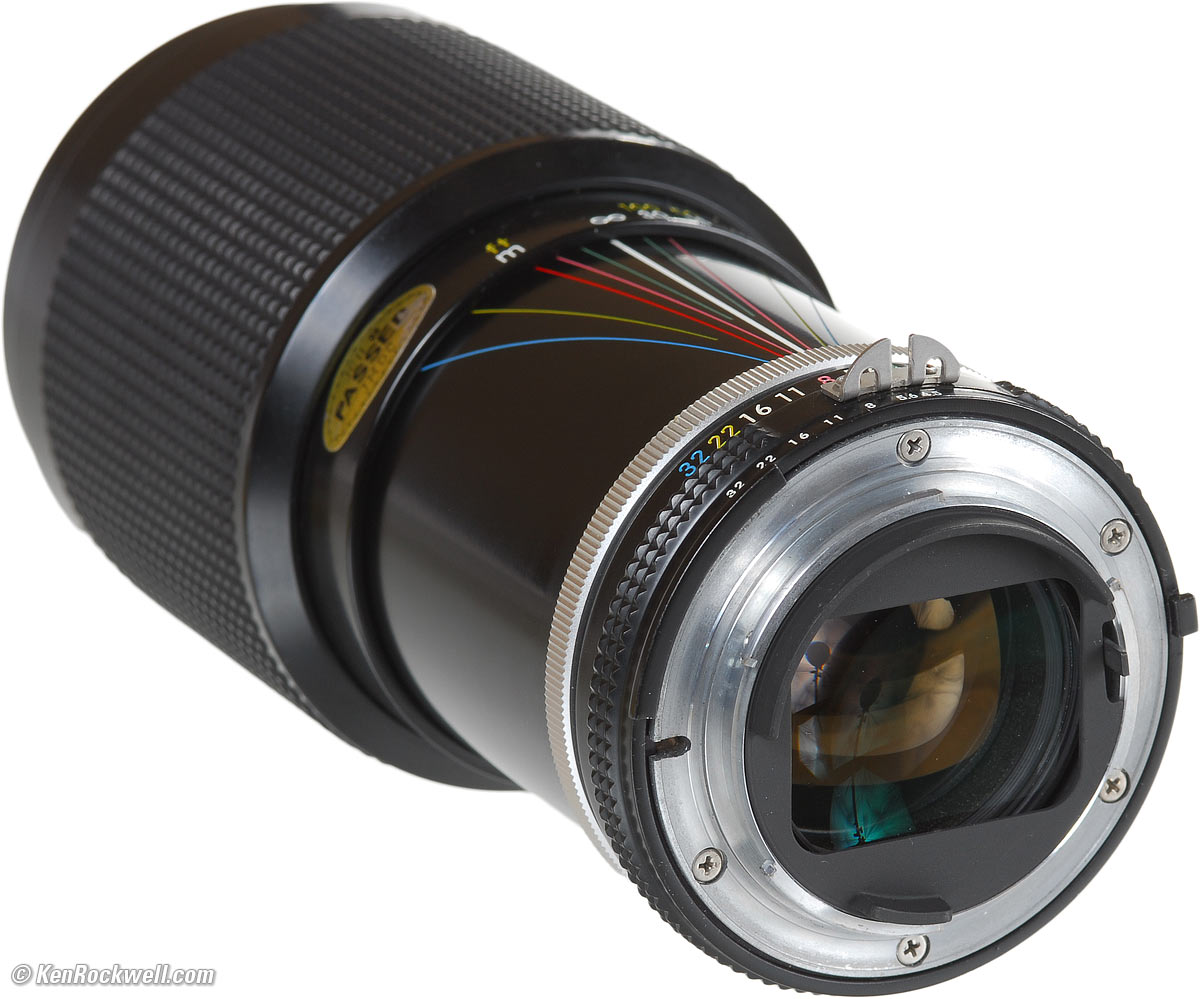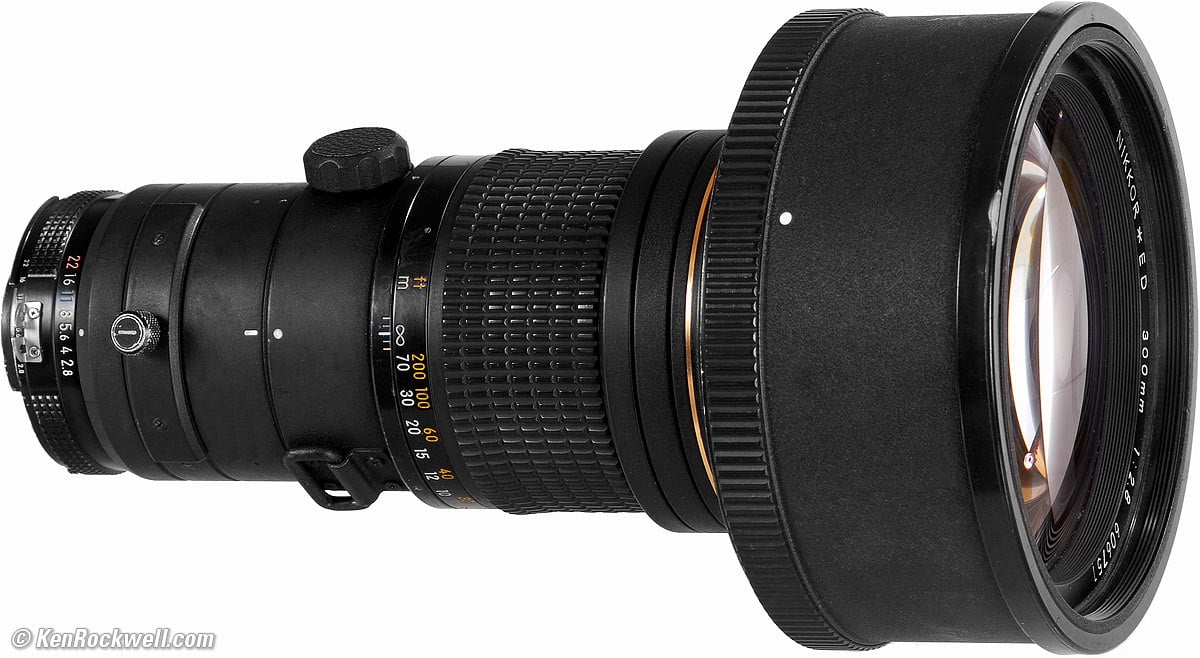Home Donate New Search Gallery Reviews How-To Books Links Workshops About Contact
Best Nikon Lenses
Best for: FX DSLR DX DSLR
FX Mirrorless DX Mirrorless
Manual-Focus for 35mm Film Classics
This all-content, junk-free website's biggest source of support is when you use any of these links to approved sources when you get anything, regardless of the country in which you live. Thanks for helping me help you! Ken.
March 2020 All Nikon Reviews: Mirrorless Mirrorless Lenses All Nikon Lenses Nikon Flash All Reviews
|
I buy only from these approved sources. I can't vouch for ads below. |
Best Lenses for FX DSLRs (D850, D780, D610 etc.) top
Manual-Focus for 35mm Film Classics
28-300mm VR (2010-today) top
For Nikon FX DSLRs. 77mm filters, 28.1 oz./796g, 1.6'/0.5m close focus. Check Price.
As a guy who's owned probably every Nikon lens ever made, even for Nikon's 1940s-1960s rangefinder cameras, I'm astonished at how this one lens replaces every other lens I used to use, with the exception of ultra-ultra wides.
The 28-300mm VR is my freedom lens. It lets me get rid of my old fashioned "camera bag" full of lenses that I used to carry.
While people who haven't shot it don't trust that it's sharp, it's newer and sharper than all the fixed lenses I used to haul around, and I can get any focal length with a twist of my wrist. Look at my Nikon 28-300mm sample images and see for yourself:
The 28-300mm VR replaces all the lenses we used to haul around. The only thing it doesn't do is replace an ultra-wide lens like the 16-35mm VR, or allow us to shoot sports in dim light like the 70-200mm f/2.8 VR FL. If you need anything longer, you'll get better photos by getting closer with the 28-300mm VR than you will by using a longer lens like the 600mm VR from farther away.
As you can see, VR works great, letting me get ultrasharp results hand-held at 1/20 of a second. Not only does this lens let me leave my bag home, I can leave my tripod home, too.
Vivid Yellow Tree by the Merced River, Yosemite Valley, October 2017. Nikon D850, Nikon 28-300mm VR at 36mm at f/8 hand held at 1/20 at Auto ISO 400, Perfectly Clear v3.5. bigger or full-resolution.
The only other lens I sometimes carry with my 28-300mm is my 16-35mm VR:
16-35mm f/4 VR (2010-today) top
For Nikon FX DSLRs,
The 16-35mm is sharp, sharp, sharp, even wide open, and even in the corners.
I've shot a lot of fixed 24mm, 20mm, 18mm, 17mm, 15mm and 14mm lenses in my days, and this zoom is sharper.
The Nikon 14-24mm f/2.8 AF-S is the precursor to the 16-35mm VR. I find the 16-35mm a little sharper and much smaller and much more practical, but consider the 14-24mm if you need f/2.8 or 14mm.
If you want a really fast lens in an even smaller package than either of these, Nikon's 20mm f/1.8G AF-S is a unique ultra-speed ultrawide. None of Sony, Canon, or Fuji make a lens this wide and fast; it's also ideal for photographing the Milky Way. I bring my 20mm f/1.8 when I'm travelling light instead of the 16-35mm VR.
Make sure that you know How to Use Ultrawide Lenses.
70-200mm f/2.8 VR FL (2016-today) top
For Nikon FX DSLRs. 77mm filters, 50.3 oz./1,425g with tripod collar, 3.6'/1.1m close-focus. Check price.
While I prefer my 28-300mm because I prefer to carry less, most full time pros would never leave the house without their 70-200mm f/2.8 VR FL, which is the world's best 70-200mm lens.
For lighter weight at a much lower price, also consider the 70-200mm f/4.
For more reach, consider the 80-400mm VR, and again, I prefer my 28-300mm over all the rest of these because I don't need f/2.8 and I prefer my 28-300mm's all-encompassing zoom range.
200-500mm VR (2015-today) top
For Nikon FX DSLRs. 95mm filters, 81¼ oz./2,300g with collar, 73¾ oz./2,090g without collar, 7.2'/2.2 m close focus. Check price.
The 200-500mm is unique in being super-long, super-sharp, and very inexpensive. It's a steal!
It doesn't focus closely (7/2'/2.2m) and it doesn't zoom wider than 200mm, which are how Nikon is able to make this so inexpensively and have it work so well as an ultra tale.
The 80-400mm VR is more versatile as a general-purpose tale. The 80-400 focuses much closer and zooms much wider, but it also costs much more. If you get this 200-500mm, you'll still want a regular tele like the 70-200mm f/2.8 FL or even my favorite 28-300mm VR.
24-70mm f/2.8 VR (2015-today) top
For Nikon FX DSLRs. 82mm filters, 37.6 oz./1,067 g, 1.3'/0.4 m close focus. Check price.
I prefer bringing just my 28-300mm VR, but if you need f/2.8 and don't mind bringing more lenses along, the 24-70mm f/2.8 E VR is a flawless state-of-the-art lens, a favorite of professionals.
If you don't need VR, the older 24-70mm f/2.8G is still sold new and is an equally excellent professional lens.
50mm f/1.4G AF-S (2015-today) top
For Nikon FX DSLRs. 58mm filters, 9.8 oz./278g, 1.5'/0.45m close focus. Check price.
For low-light and/or low weight, personally I and many prefer the 50mm f/1.4G AF-S. It's small, light, super sharp even wide-open and reasonably priced.
It has the best optics of any 50mm f/1.4 ever sold by Nikon or Canon. It's a much newer design than Canon's, which dates back to the 1970s!
Best Lenses for DX DSLRs (D7500, D5600, D3500, etc.) top
Manual-Focus for 35mm Film Classics
18-300mm VR DX (2014-today) top
For Nikon DX DSLRs. 67mm filters, 19.4 oz./550g, 1.6'/0.5m close focus. Check price.
This lens is fantastic because it gives us every imaginable focal length we'd ever need for a DX DSLR in just one lens, and it's sharp. Heck, I sold an image to McDonald's shot on the older version — and they used it on a billboard!
For a DX DSLR, this is the only lens you'd ever need, unless you also need an ultra-ultra wide lens:
10-20mm DX (2017-today) top
For Nikon DX DSLRs. 72mm filters, 8.0 oz./227g, 0.7'/0.22m close focus. Check price.
This tiny and inexpensive lens wows me with its fantastic performance and ultra low price. Very few people know How to Use Ultrawide Lenses, but for those who do, this is Nikon's best DX ultrawide yet.
Be sure that this new AF-P lens is compatible with your camera; if not, get the older 10-24mm if you have an older DX DSLR.
35mm f/1.8 DX (2009-today) top
For Nikon DX DSLRs. 52mm filters, 7.0 oz/197g, 1 foot/0.3m close-focus. Check price.
This lens is a steal. It's my favorite DX lens, since when I shoot a DX DSLR, I'm traveling basic and light (I bring my Full-Frame DSLR If I'm shooting something serious). I'll grab this one lens and leave everything else at home, and this is also a great lens to add to the 18-300mm for people photography in low-light.
The 35mm f/1.8 is super-sharp, focuses instantly, it's fast, it's tough (metal mount), and simply works perfectly for a super low price.
What more can I say? Get one before Nikon catches on and raises the price.
70-300mm AF-P DX VR
For Nikon DX DSLRs. 58mm filters, 14.5 oz./412g, 3.7'/1.1m close-focus. Check price.
If you have the 18-300mm VR DX you don't need this lens, but if you need ultra-fast autofocus or prefer to use the smaller 18-55mm lens or the excellent 16-80mm most of the time and thus need a separate telephoto zoom, , this new 70-300mm has the fastest almost instantaneous focusing of any Nikon DX telephoto.
Be sure that this new AF-P lens is compatible with your camera; if not, use the 18-300mm VR DX or older 55-300mm DX.
Best Lenses for Full-Frame Mirrorless (Z6 & Z7) top
Manual-Focus for 35mm Film Classics
Z 24-70mm f/2.8 (2019-today) top
For full-frame mirrorless (Z6 & Z7). 82mm filters, 28.3 oz./803g, 1.15'/0.38m close focus. Check price.
The Z 24-70mm f/2.8 is a fast, ultrasharp lens. The Z 24-70mm f/4 that often comes included with a Z6 or Z7 is just as sharp, and much lighter and less expensive. Personally I prefer the Z 24-70mm f/4, while gear hogs prefer this Z 24-70mm f/2.8. Both produce magnificent images.
Z 14-30mm (2019-today) top
For full-frame mirrorless (Z6 & Z7). 82mm filters, 16.9 oz./479 g, 0.9'/0.28m close focus. Check price.
The Z 14-30mm stands out because it's the first-ever Nikon lens wider than 16mm that can take a normal screw-in front filter. Older lenses, like the huge 14-24mm f/2.8, had bulbous front elements that were completely unprotectable.
No only does the Z14-30 take filters, it's the sharpest ultra-ultrawide ever from Nikon, and it's also small and collapses when not in use. Bravo!
Make sure that you know How to Use Ultrawide Lenses.
Best Lenses for DX Mirrorless (Z50) top
Manual-Focus for 35mm Film Classics
These lenses also work on full-frame mirrorless (Z6 and Z7), but you're throwing away over half of your full-frame sensor area, and be sure to update to at least version 2.1 firmware in the Z6 or Z7 for VR to work with these lenses:
Nikon Z 16-50mm VR DX (2019-today) top
Nikon Z DX 16-50mm f/3.5-5.6 VR, collapsed.
For Nikon Z cameras, 46mm filters, 4.6 oz./131g, 0.7'/0.2m close focus. Check price.
This is a tiny little lens not much bigger than a lens cap. It collapses simply by turning the zoom past 16mm, and it's ultra-sharp, focuses super fast and close, has pretty good sunstars and has no distortion as shot on the Nikon Z50 with which it was introduced.
It excels because it's so tiny and inexpensive, and has better performance than many more exotic older lenses. Nikon has learned a lot, and puts all their tricks in this collapsible lens.
Nikon Z 50-250mm VR DX (2019-today) top
Nikon Z DX 50-250mm f/4.5-5.6 VR, collapsed.
For Nikon Z cameras, 62mm filters, 14.1 oz./ 400g, 1.6'/0.5m close focus. Check price.
Like the Z DX 16-50mm above, this lens stands out as an excellent optical performer, as sharp, if not sharper than 2016's (but still current) 70-200/2.8 FLE and sharper than the fully professional 70-200/2.8 VR II, and it's lightweight, collapses for travel, focuses super fast and close, and sells for next to nothing.
Best Lenses for Manual-Focus 35mm Cameras top
Manual-Focus for 35mm Film Classics
Nikon made its name with its manual-focus lenses. They made a zillion different types. These below are the specific lenses I carry when I shoot a manual-focus camera like my F, F2, F2S, F2AS, F3, FA, FE, FE2, FM, FM3a & etc. Any of the manual lenses work great; these are just what I prefer to cover everything.
See also How to Shoot Film and Why Fixed Lenses Take Better Pictures.
Ultrawide
20mm f/4 AI or 20mm f/3.5 AI (both take 52mm filters) or 20mm f/2.8 AI-s (62mm filters).
Carry only one of these depending on which you happen to have and which filter size you prefer.
Normal
35mm f/1.4 AI-s (52mm filters).
50mm f/1.4 AI-s or 55mm f/2.8 MICRO-Nikkor AI-s or 55mm f/3.5 MICRO-Nikkor AI. All take 52mm filters.
Carry only one of these 50 or 55mm lenses at a time. The MICRO-Nikkors are sharper, even at infinity, than the f/1.4 and f/1.8 lenses.
Tele
If I need speed for low-light, I may carry a trio of 85mm f/2 AI-s (52mm), 135mm f/2.8 AI-s (52mm) and 200mm f/4 (52mm) or 180mm f/2.8 ED. Only carry the 180 or 200, never both.
- OR -
In daylight, I just carry a 80-200mm f/4 AI-s (62mm) or 80-200mm f/4.5n AI (52mm filters), again depending on which you have and your preference in filter size. Don't carry one of these zooms at the same time as any of the fixed teles.
When shooting film, using filters is critical, and you should select lenses which share the same size filters so you only have to bring one set of them.
Classic Lenses (1946-today) top
Manual-Focus for 35mm Film Classics
50mm f/1.8D AF (versions from 1978 - today)
Nikon's least expensive lens is also among its sharpest. It has no distortion, focuses almost instantly, and it's Nikon's smallest and lightest lens.
It is among Nikon's fastest lenses, and covers film and the full FX frame.
Except that the D40, D40x and D60 can't autofocus with it (neither can the F3), there is no reason not to own one of these, unless you opt for the twice as expensive 50mm f/1.4 D.
All the earlier 50mm f/1.8 lenses since 1978 are also all excellent, including the 50mm f/1.8 AF (non-D), 50mm f/1.8 Nikkor manual focus, and the 50mm f/1.8 Series E.
135mm f/2 DC AF (1990 - today) top
Americans just don't get this lens, because Nikon messed up its name. The 135mm DC, or "Defocus Control," lens, is among Nikon's sharpest lenses ever. Defocus control doesn't mean soft focus, it means "background softness control." The DC feature is really Bokeh optimization.
The DC feature always keeps the subject ultra sharp, and allows the photographer to defocus just the background (or foreground) into the softest, smoothest, dreamiest and creamiest pastels ever.
The 135mm DC is Nikon's best hand-held portrait lens ever, as well as a killer-sharp 135mm lens for everything.
85mm f/1.4 AI-s (1981-2006) top
The optics of most of Nikon's earlier AI-s manual focus lenses have been exceeded in Nikon's newer AF lenses. This isn't the case here.
This manual focus lens outperforms its newer 85mm f/1.4 D autofocus sibling. In fact, its so good that even after the f/1.4 autofocus lens came out, for about the about the same price, Nikon kept making these for 10 more years!
It's sharper than the new AF lens, and it has much better bokeh than most other Nikon lenses.
If I'm photographing moving people and kids, of course I'll prefer the AF lens, but if I'm hugging a tripod, the King is still the King.
28mm f/1.4D AF (1994-2006) top
Nikon 28mm f/1.4 D AF. (blacked-out for national security purposes)
Nikon spent ten years perfecting this masterpiece, then discontinued it in 2006 from lack of market interest due to its deservedly high price. Collectors finally figured it out, and they now sell used for double what they sold for new.
This lens is special because its sharp, even in the corners, even wide-open at f/1.4. It is worlds better than today's 35mm f/1.4 (which is a manual focus lens made since 1969) or the manual focus 28mm f/2.
This lens allowed me to shoot things hand-held on ISO 50 film that otherwise I could not.
70-180mm f/4.5-5.6D Micro (1997-2004) top
70-180mm f/4.5-5.6D ED AF Micro.
Another lens so great that the market never figured it out, this is the only true zoom Micro (macro) lens ever made by Nikon. It also sells used for more than it sold for when new.
Unless you're photographing stamps, which makes you silly because you'll get better images sticking them in a scanner, shooting macro is a real pain having to move in and out all the time to frame products and chasing moving subjects like poisonous snakes. I know snake guys who pack heat to protect their 70-180mm lenses; these lenses are that good and irreplaceable.
All of my recent product shots, like half the shots on this page, are shot with this lens.
13mm f/5.6 AI-s (1976 -1998) top
The 13mm f/5.6 was the world's widest lens when it was introduced, and is still the widest non-distorting professional SLR lens ever made in all of history.
It covers FX; a DX lens would need a focal length of just 8.5mm to cover the same ultra-ultra wide angle!
Nikon 13mm f/5.6 swallowing a D300. bigger.
This beast is big and heavy: 5 inches (12cm) around and it weighs 3 pounds (1.4kg) with caps.
The 13mm is not a fisheye. Straight lines stay straight. In fact, just to show off, the 13mm has less distortion than zooms or most other normal and wide lenses! Drop a ruler on lines in the image, and they're straight.
It was made back when Nikon was still great enough and crazy enough to make things just because they could. It always cost a significant fraction of what the average American family earns in a year, and used ones today sell for about the same real price as when new: about $5,000 to $20,000.
I lusted after the 13mm ever since I was a kid in the 1970s. I saw one on display at Nikon House in Rockefeller Center in New York City in the 1970s, and saw one again in early 2008, from which I'll be penning a review one of these days.
Nikon only made these to special order, and only made a few hundred of them across 20 years. Customers who took factory delivery in Japan were treated to a ceremony where the lens was blessed by a Shinto priest. I've only seen two in my life, both in captivity, and never seen one in the field.
Sigma makes an inexpensive 12-24mm zoom that may be wider, but it's not a professional lens, its not a Nikon lens, and it distorts slightly. Nikon's 14mm f/2.8 and 14-24mm AF-S are not quite as wide, and have more distortion.
This 13mm is also unusual in that it has little to no distortion of straight lines. Unlike zooms and most fixed lenses like the current 14mm f/2.8 and 14-24mm AF-S, make a photo of the horizon along the bottom or shoot a brick wall, and everything stays straight and square. Of course even the slightest tilt on your part throws everything into a bizarre angular array of converging and diverging lines, but that's the fun.
Don't expect ever to see one of these, since production was so low. Just get the 14-24mm AF-S , which is a lot less expensive, two stops faster and a lot sharper.
28-80mm G (2001-2006) and 28-200mm G (2003-2006) top
Nikon 28-80mm G, in ghastly silver.
These are very inexpensive plastic-mount lenses that came out in 2001 and 2003 for sale with Nikon's cheapest film cameras like the N55 and N75. No one paid any attention, because everyone was swapping over to digital cameras faster than Nikon guessed, leaving Nikon stuck with pallets of unsold N75s.
These two lenses incorporate every trick Nikon has learned over decades and decades of lens design and volume manufacturing. Each uses aspherical elements to improve performance and reduce size and weight.
Both are sharp, even in the corners. Even the 28-80mm G is sharper than the far more expensive 24-120mm VR, which made my 10-Worst list.
Each of these lenses isn't quite as sharp as Nikon's best, but pretty darn close. What gets them on my Best list is that they are this good at such a low price, and that they are tiny and weigh nothing for easy carrying.
The 28-200mm G is a miracle. Not only is it pretty sharp in most cases, what gets it on my Best list is that it focuses so closely at every focal length. It focuses down to 17 inches (43cm) at every focal length, much closer than any other Nikon tele, ever. Most teles, like the 135mm DC, often can't focus closely enough for photos of baby heads. This 28-200mm does. The AF isn't that fast since it covers such a wide range, but its fast enough.
The 28-80mm G focuses more closely than other Nikon lenses, often eliminating the need for a macro lens. It autofocuses faster than any other Nikon AF lens, including the AF-S lenses. Just try one; it's uncanny how instantly and exactly it focuses.
If I want a "do everything" lens for my D3 or D700, it's not the 24-120mm VR. It's the plastic 28-200mm G.
80-200mm f/4.5n AI (1977-1981) top
Zoom-NIKKOR 80-200mm f/4.5n AI.
Selling today for only about $50 used if you know How to Win at eBay, this unassuming tele zoom just happens to be the sharpest tele zoom I've ever tested. In my 105mm center, 200mm center, 105mm corner and 200mm corner sharpness comparisons, it's the most consistent performer.
All Nikon's 80-200mm f/4.5 zooms are excellent. I found the best is this AI "n" (new) version, which is recognized by the black rectangular plate on its rear mount as shown above.
The zoom and focus are supposed to be loose and slippery. This was the sports and action lens of its day. No one was silly enough to shoot zooms on tripods pointed down, so creep wasn't the issue.
This Nikkor lens was made with such incredible precision that it didn't need to be pumped full of grease to fill up the internal slop of cheaper lenses of its day. It is so well made that it works with little or any lubrication, so it can work in temperature extremes and needs only a tiny flick to move the settings. Notice how it moves so easily, but that there is no play in any of the movement.
300mm f/2.8 ED-IF (1977-1982, continues today) top
Nikon's first internal-focusing 300mm /2.8 lens of 1977 quickly became the news and sports photographers standard long lens. It was fast enough to shoot indoor sports, and the internal-focusing design let it focus from near to far with the flick of a finger.
The ED glass allowed superb optical quality in a super-speed long lens.
See the Nikon NIKKOR 300mm f/2.8 ED-IF review, and the History of Nikon 300mm f/2.8 lenses.
Today, this lens' spirit lives on in the Nikon N AF-S NIKKOR 300mm f/2.8G ED VR II.
Older Articles
These are older, and still can be helpful.
Best lenses for FX and 35mm SLRs
Don't forget to read the even funnier Nikon's 10 Worst Lenses.
Help me help you top
I support my growing family through this website, as crazy as it might seem.
The biggest help is when you use any of these links when you get anything, regardless of the country in which you live. It costs you nothing, and is this site's, and thus my family's, biggest source of support. These places have the best prices and service, which is why I've used them since before this website existed. I recommend them all personally.
If you find this page as helpful as a book you might have had to buy or a workshop you may have had to take, feel free to help me continue helping everyone.
If you've gotten your gear through one of my links or helped otherwise, you're family. It's great people like you who allow me to keep adding to this site full-time. Thanks!
If you haven't helped yet, please do, and consider helping me with a gift of $5.00.
As this page is copyrighted and formally registered, it is unlawful to make copies, especially in the form of printouts for personal use. If you wish to make a printout for personal use, you are granted one-time permission only if you PayPal me $5.00 per printout or part thereof. Thank you!
Thanks for reading!
Mr. & Mrs. Ken Rockwell, Ryan and Katie.
Home Donate New Search Gallery Reviews How-To Books Links Workshops About Contact





